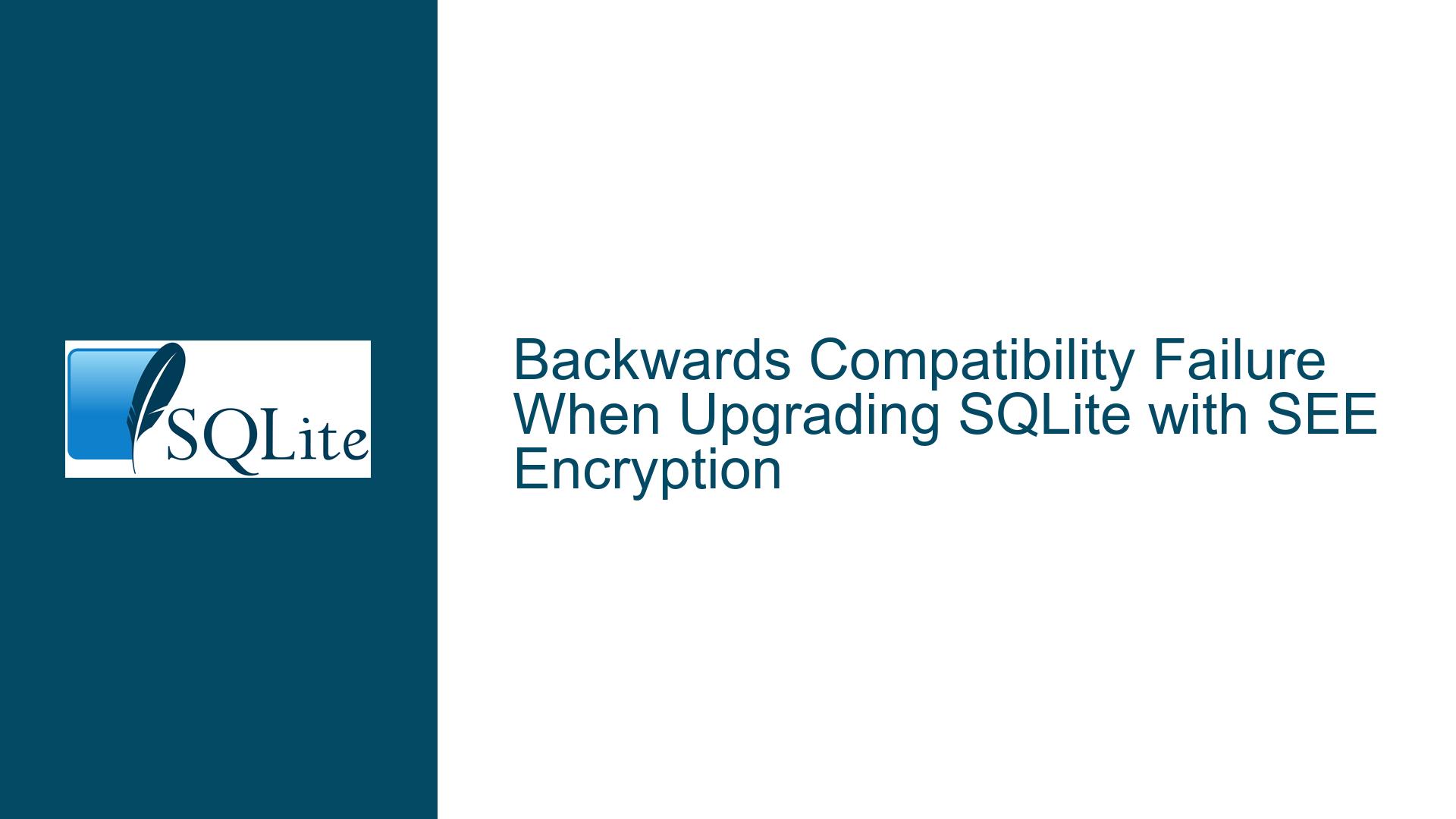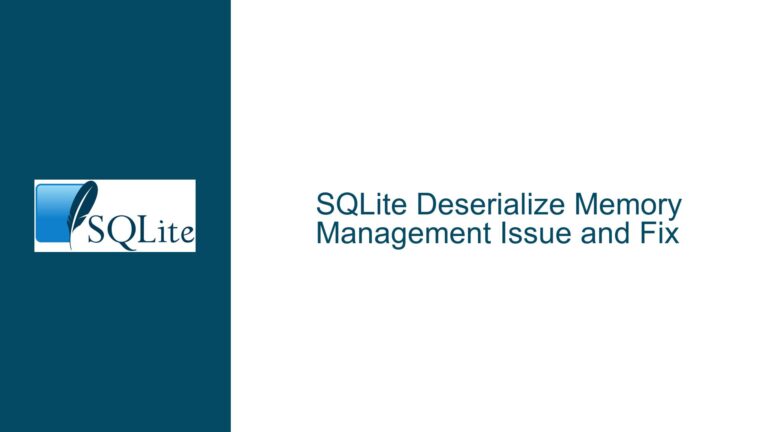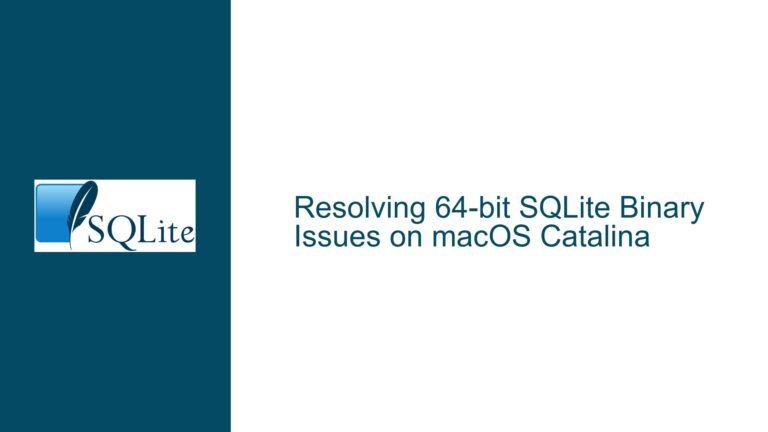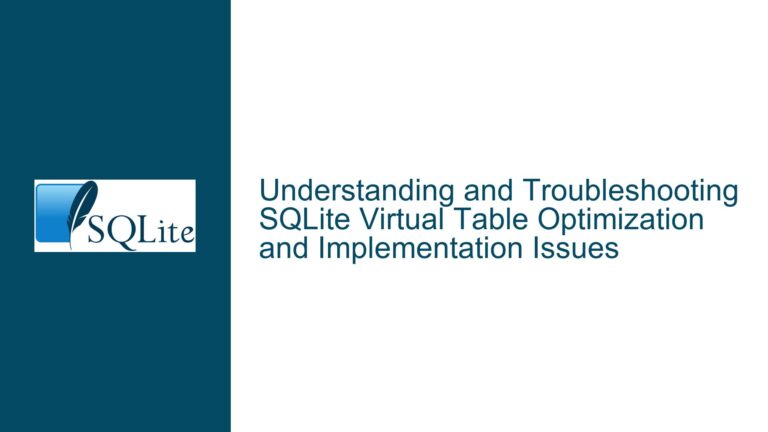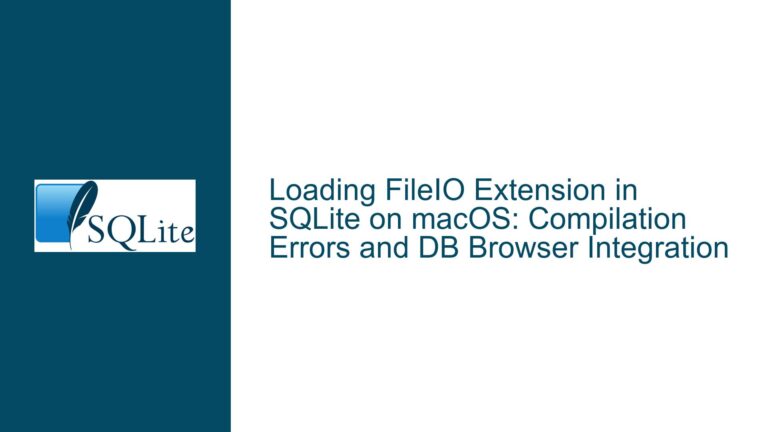Backwards Compatibility Failure When Upgrading SQLite with SEE Encryption
Issue Overview: Upgrading System.Data.SQLite with SEE Breaks Legacy Database Access
The core issue arises when upgrading from an older version of System.Data.SQLite (1.0.98) with custom AES-256 encryption to a newer version (1.0.118) using SQLite Encryption Extension (SEE 3.42.0). Databases encrypted with the legacy library fail to open with the upgraded library despite attempts to maintain backward compatibility. This manifests as decryption errors, inability to read database headers, or "file is encrypted or is not a database" exceptions. The problem is rooted in differences between encryption implementations across SQLite versions, compounded by build configuration nuances when integrating SEE.
Three critical factors dominate this scenario:
- Algorithmic Disparities: The legacy System.Data.SQLite (pre-1.0.113) used a CryptoAPI-based codec with RC4 encryption by default, while SEE employs AES-256 in modes like OFB or CBC. Even if AES-256 was manually configured in the legacy library, differences in initialization vectors, key derivation, or block modes may exist.
- Build Process Divergence: Manual replacement of
sqlite3.cwith SEE’s AES-256 implementation without using SQLite’s designated build tool (buildSds.eagle) risks omitting critical backward-compatibility hooks. - Missing Decryption Bridges: The absence of
DecryptLegacyDatabaseor equivalent functions in custom SEE builds prevents automatic migration from legacy encryption formats.
The problem is exacerbated by incomplete documentation on migrating from proprietary System.Data.SQLite encryption to SEE. Developers often assume that compiling SEE’s AES-256 implementation guarantees backward compatibility, but this ignores historical encryption schema changes and build-time dependencies.
Possible Causes: Algorithm Mismatches, Build Misconfigurations, and Missing Legacy Hooks
Cryptographic Algorithm Incompatibility
Legacy System.Data.SQLite versions (pre-1.0.113) defaulted to a CryptoAPI-based RC4 codec, even if AES-256 was advertised. The AES implementation in these older versions often used non-standard configurations—for example, AES-OFB with a fixed initialization vector (IV) or custom key derivation routines. SEE’s AES-256 implementations, however, adhere strictly to NIST guidelines, using unique IVs per page and PBKDF2 key derivation. When upgrading, these algorithmic discrepancies render existing databases unreadable unless explicit backward-compatibility layers are activated during compilation.
Improper Build Configuration for SEE Integration
Replacing sqlite3.c with SEE’s sqlite3-see-aes256-ofb.c without invoking the sanctioned buildSds.eagle script bypasses essential build flags. The legacy System.Data.SQLite codebase expects -DCODEC_TYPE=CODEC_TYPE_AES256 or similar preprocessor directives to activate encryption bridges. Manually editing project files (e.g., build_net_standard_20.bat) often omits these flags, resulting in a SEE-enabled build that lacks legacy decryption capabilities. Furthermore, the InteropIncludeSee property in .targets files must be set to true before compiling native interop libraries, a step easily overlooked.
Absence of Legacy Decryption Functions in Custom Builds
The DecryptLegacyDatabase method and uncryptoapi-cli.c tool are exclusive to SEE’s NuGet packages and licensed source repositories. Developers compiling SEE from publicly available sources (e.g., amalgamation files) will not inherit these utilities unless explicitly included. This creates a "decryption gap" where newer libraries cannot interpret legacy RC4 or non-compliant AES schemas. Even when using SEE’s RC4 implementation, subtle differences in salting or page encoding between old and new libraries may persist.
Troubleshooting Steps, Solutions & Fixes: Algorithm Audits, Build Corrections, and Migration Pathways
Step 1: Determine Legacy Encryption Schema
Before attempting decryption or migration, identify the exact algorithm and configuration used by the legacy System.Data.SQLite library:
- Inspect Code or Binaries: If source code is available, search for
SQLiteConnection.SetPasswordorChangePasswordcalls. The absence of explicit algorithm selection implies usage of the default RC4 codec. - Analyze Encrypted Databases: Use a hex editor to examine the first 16 bytes of the database file. Legacy RC4-encrypted databases often start with a predictable salt pattern (e.g.,
0x01followed by 15 null bytes), whereas AES-encrypted databases have randomized IVs. - Empirical Testing: Attempt decryption using the
uncryptoapi-cli.ctool (available in SEE’s source repository). If successful, the legacy database uses CryptoAPI RC4.
Example Workflow for Algorithm Identification:
- Extract the database’s first page:
dd if=legacy.db of=header.bin bs=1024 count=1 - Open
header.binin a hex editor. RC4-encrypted databases typically exhibit low entropy in the first 16 bytes, while AES-encrypted data appears random.
Step 2: Rebuild System.Data.SQLite with SEE and Legacy Support
To enable backward compatibility, rebuild the library using SQLite’s prescribed buildSds.eagle toolchain:
Download Required Assets:
- Clone the SEE source repository (requires a valid license).
- Obtain the System.Data.SQLite source code matching the target version (1.0.118).
Directory Structure Configuration:
Place the SEE source in a directory adjacent to System.Data.SQLite:/dev/ ├─ see/ # SEE source └─ System.Data.SQLite/ └─ SQLite.Interop/ └─ src/ └─ core/ └─ sqlite3.c # Will be replaced by buildSds.eagleExecute Build Scripts:
Navigate toSystem.Data.SQLite/build/and run:perl buildSds.eagle --see=../see --mode=Release --native-only --net-standard20This script automatically replaces
sqlite3.cwith SEE’s amalgamation, injects legacy decryption hooks, and sets required preprocessor flags (e.g.,-DSQLITE_HAS_CODEC).Verify Build Artifacts:
Confirm thatSQLite.Interop.dllexports thesqlite3_activate_seeandsqlite3_decrypt_databasefunctions using a tool likedumpbin(Windows) ornm(Unix):dumpbin /EXPORTS SQLite.Interop.dll | findstr "sqlite3_decrypt_database"
Step 3: Implement Database Migration Using Hybrid Libraries
If rebuilding with legacy support fails, employ a dual-library approach to decrypt old databases and re-encrypt them with the new schema:
Decrypt with Legacy Library:
Create a utility that loads the oldSystem.Data.SQLite.dll(1.0.98) and performs a password change to an empty string, effectively removing encryption:using (var conn = new SQLiteConnection("Data Source=legacy.db;Password=old_password")) { conn.Open(); conn.ChangePassword(string.Empty); // Decrypts the database }Re-encrypt with SEE-Enabled Library:
Use the new library to open the decrypted database and apply AES-256 encryption:using (var conn = new SQLiteConnection("Data Source=decrypted.db")) { conn.Open(); conn.ChangePassword("new_aes256_password"); }Automate Batch Migration:
For large-scale deployments, script the migration process using PowerShell or a similar tool:Get-ChildItem -Path .\*.db | ForEach-Object { $legacyDb = $_.FullName $tempDb = "$legacyDb.decrypted" # Decrypt with legacy DLL & migrator.exe decrypt --input "$legacyDb" --output "$tempDb" # Encrypt with new DLL & migrator.exe encrypt --input "$tempDb" --output "$legacyDb" Remove-Item $tempDb }
Step 4: Leverage SEE’s Uncryptoapi-cli for Bulk Decryption
For environments where code changes are impractical, use the uncryptoapi-cli tool provided in SEE’s source:
Compile the Utility:
Navigate tosee/tools/and compileuncryptoapi-cli.c:gcc uncryptoapi-cli.c -o uncryptoapi-cli -lsqlite3Execute Decryption:
Run the tool against each legacy database:./uncryptoapi-cli legacy.db decrypted.db "old_password"Re-encrypt with SEE:
Opendecrypted.dbusing the new library and set a password to enable AES-256 encryption.
Step 5: Address Build Failures in buildSds.eagle
If the buildSdsNetStandard20.bat script fails, troubleshoot common issues:
Path Validation:
Ensure the--seeparameter points to the SEE directory containingsqlite3-see.c.Compiler Dependencies:
Install Visual C++ Build Tools 2019 with C++/CLI support. Verify with:cl /?Preprocessor Flags:
Manually add legacy support flags toSQLite.Interop.vcxproj:<ClCompile> <PreprocessorDefinitions>SQLITE_HAS_CODEC;SQLITE_ENABLE_LEGACY_CRYPTO_API;%(PreprocessorDefinitions)</PreprocessorDefinitions> </ClCompile>Linker Inputs:
Confirm thatsqlite3-see-aes256-ofb.cis included in thecoredirectory’s compile list.
Final Considerations: Licensing and Long-Term Strategy
- NuGet Packages: For teams without SEE source access, procure licensed NuGet packages containing pre-built
DecryptLegacyDatabasesupport. - Algorithm Standardization: Migrate all databases to SEE’s AES-256-OFB and deprecate RC4 to avoid future incompatibilities.
- Continuous Integration: Integrate SEE build scripts into CI/CD pipelines to ensure consistent encryption configurations across releases.
By methodically auditing encryption schemas, rectifying build misconfigurations, and implementing phased migration strategies, teams can resolve backward compatibility issues while transitioning to modern SQLite encryption standards.
